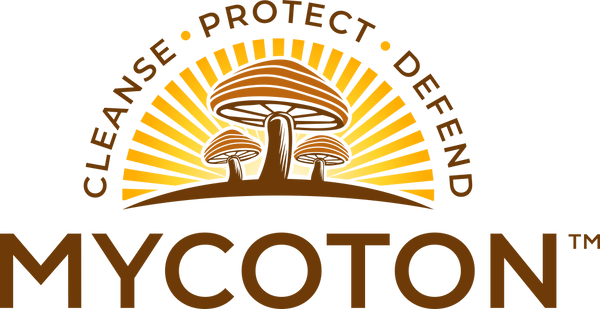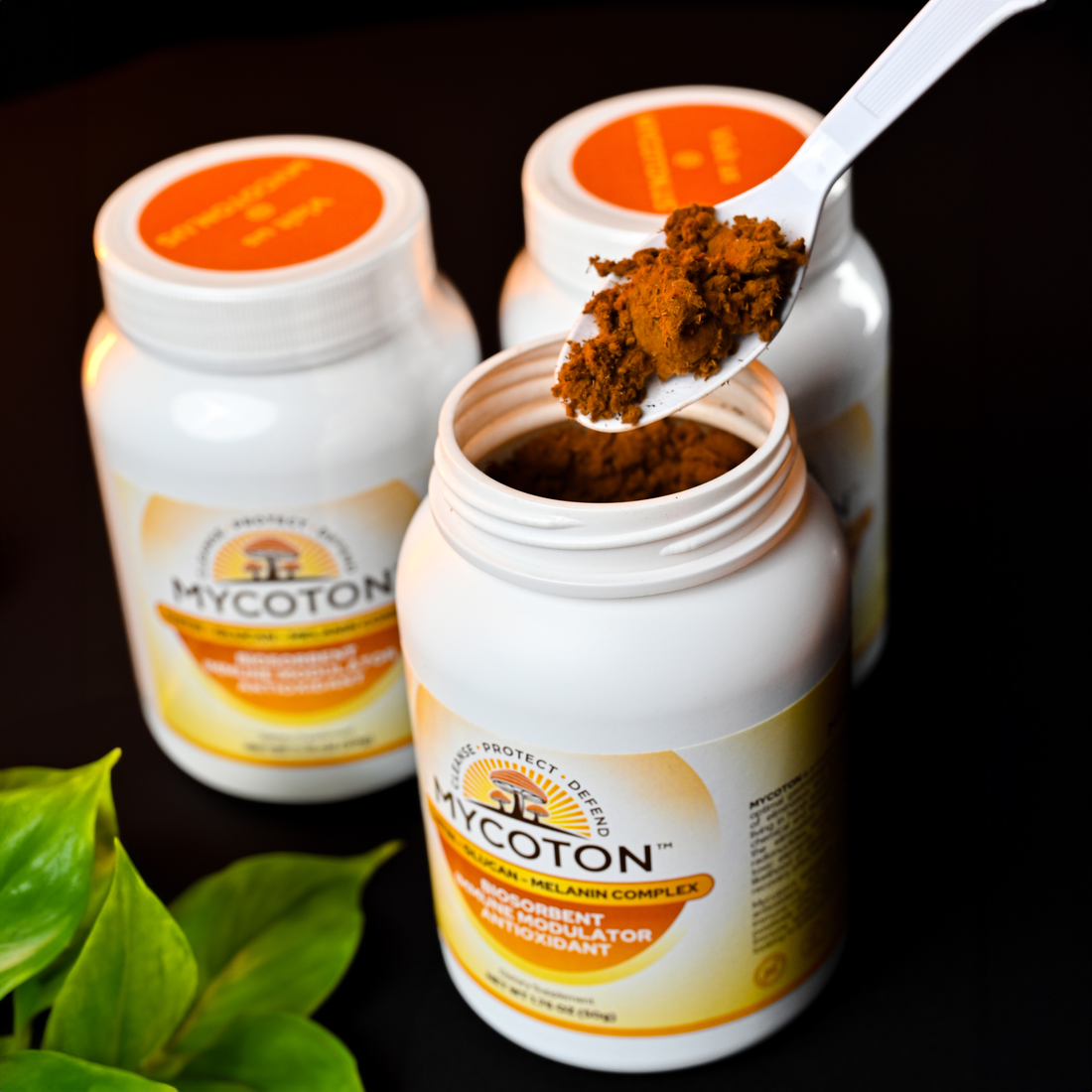Crafted from the biomass of the fruiting bodies of the illustrious tinsel mushroom, also known as Fomes fomentarius, this extraordinary natural product is free from any extraneous ingredients.
This tinder fungus, found thriving on lifeless wood across the globe, has stood the test of time and proven its medicinal value since the dawn of civilization. Renowned for its incredible healing properties, the fruit bodies of this mushroom have been celebrated in various countries' traditional healing practices.
The production process of Mycoton embraces a technology that preserves the integrity of the original biological raw material without resorting to chemical transformations. It involves delicately crushing the fruiting bodies, dissolving and removing soluble components, thorough washing of the insoluble residue with purified water, meticulous drying, and finally, packaging. The insoluble residue is where the magic lies, containing a complex amalgamation of three biopolymers: chitin (approximately 70%), glucans (around 20%), and melanin (approximately 10%). These extraordinary components serve as the active ingredients of Mycoton, infusing it with unrivaled potency. The resulting material exhibits a thin fibrous structure, presenting itself as a brown powder devoid of taste or odor. As a product derived from nature, Mycoton naturally contains trace amounts of ash elements and water.
Every active component found within Mycoton has been scientifically recognized and utilized across various domains. Let us delve into the profound capabilities of each:
Chitin
In nature, chitin stands as a remarkable biopolymer, chemically akin to cellulose and second only to it in terms of prevalence. Within fungal cell walls, chitin takes the form of microfibrils, intertwining to create a spatial network. This intricate structure bestows Mycoton with an extraordinary specific surface area—exceeding 1000 m2 per gram of chitinous microfibrils. Such vast surface area equips Mycoton with unparalleled sorption capabilities.
Chitin selectively absorbs heavy metal ions and radioactive elements while leaving essential biogenic elements untouched. Mineral absorption and metabolism within the body remains undisturbed. Depending on the conditions, chitin may engage various sorption mechanisms, including complexation, ion exchange, and surface adsorption, with chelate complexation prevailing. Notably, chitin showcases significant biological activity, boasting antiviral, antibacterial, and fungicidal properties. Studies have also revealed its immunomodulating potential, along with its derivatives such as chitosan.
Glucans
Polysaccharides of diverse structures, glucans wield formidable biological activity. These potent compounds offer immunomodulating, oncostatic, antibacterial, and anti-inflammatory effects. Mushroom glucans have garnered substantial attention due to their remarkable oncostatic properties, opening new frontiers in scientific exploration.
Melanins
Melanin pigments, revered for their intrinsic qualities, and extraordinary antioxidant power, bind free radicals, safeguard cell membranes, and prevent the degradation of essential vitamins. Furthermore, they exhibit genoprotective properties, thereby fulfilling a vital protective role throughout the body.
Melanins have also garnered significant attention for their potential radioprotective properties. Scientific literature suggests that melanins exhibit remarkable antioxidant and free radical scavenging abilities, making them potent candidates for shielding cells and tissues from radiation-induced damage.
Studies propose that melanins can absorb a broad range of electromagnetic radiation, including ionizing radiation. This absorption process is believed to transform the absorbed energy into a less harmful form, minimizing the generation of reactive oxygen species (ROS) that contribute to cellular damage. By acting as radiation absorbers, melanins may mitigate the destructive impact of radiation on cellular components such as DNA, lipids, and proteins.
Furthermore, melanins are known for their ability to bind to metal ions and free radicals. This characteristic is pivotal in neutralizing radiation-induced oxidative stress, a primary contributor to radiation-induced cellular injury. The capacity of melanins to scavenge free radicals helps in maintaining the redox balance within cells, which is crucial for preserving cellular integrity.
Together, the active components of Mycoton form an extraordinary union, intertwining their unique attributes into a synergistic whole. Their true value for medical purposes has been extensively explored and acknowledged, finding practical application within the realm of medicine. The efficacy of Mycoton has undergone comprehensive studies in both laboratory and clinical settings. The remarkable results of these endeavors are chronicled in scientific publications, reports, and have been showcased at prestigious international scientific conferences. Since 1997, Mycoton has graced the Ukrainian market, touching the lives of countless individuals seeking the true essence of wellness.
Unlock the boundless potential of Mycoton and embrace the authenticity of nature's gifts. Experience the harmony of tradition and scientific innovation, as Mycoton guides you on a transformative path towards a life of enhanced well-being.

